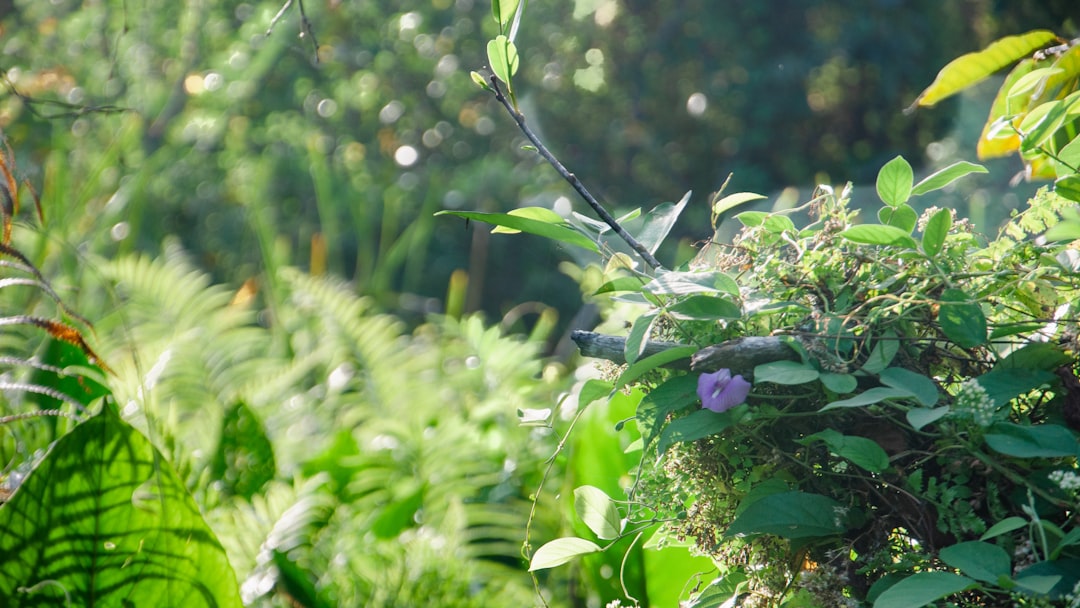Bringing the Outdoors In: A Guide to Stunning Houseplants

Houseplants have long been cherished for their ability to transform indoor spaces into vibrant, living havens. They not only add a touch of natural beauty but also offer numerous health benefits, such as improving air quality and reducing stress. In this guide, we'll explore a diverse range of eye - catching foliage plants that can bring the garden indoors, from elegant ferns and majestic palms to unique water gardens.
Ferns are a classic choice for indoor gardening. Their delicate, lacy fronds add a sense of softness and elegance to any room. One of the most popular fern varieties is the Boston fern. This fern thrives in humid environments, making it an ideal choice for bathrooms or kitchens. It prefers indirect light and moist soil. To keep your Boston fern healthy, mist it regularly and water it when the top inch of soil feels dry. Another great fern option is the maidenhair fern. With its fine, fan - shaped leaves, it has a very delicate appearance. However, it can be a bit more challenging to care for as it requires high humidity and consistent moisture. Placing it on a pebble tray filled with water can help maintain the necessary humidity levels.
Palms are another group of houseplants that can make a bold statement. The Areca palm, also known as the butterfly palm, is a popular choice. It has feathery fronds that give it a tropical look. Areca palms prefer bright, indirect light and well - drained soil. They are relatively low - maintenance but do require regular watering. The Kentia palm is also a great option. It is more tolerant of lower light conditions compared to some other palms, making it suitable for rooms with less sunlight. Kentia palms have a slow - growing nature, which means they won't outgrow their space too quickly.
When it comes to water gardens, the peace lily is a wonderful addition. It has glossy, dark green leaves and elegant white flowers. Peace lilies are known for their ability to purify the air by removing toxins such as benzene and formaldehyde. They prefer low to medium light and moist soil. However, be careful not to over - water them, as this can lead to root rot. Another water - loving plant is the Chinese evergreen. It can tolerate a wide range of light conditions, from low to bright indirect light. Chinese evergreens have variegated leaves that come in different patterns and colors, adding visual interest to any indoor setting.
Succulents and cacti are also becoming increasingly popular as houseplants. These plants are known for their ability to store water in their leaves, stems, or roots, which makes them very drought - tolerant. The jade plant is a well - known succulent. It has thick, fleshy leaves and can grow into a small tree - like shape over time. Jade plants prefer bright light and well - drained soil. They should be watered sparingly, allowing the soil to dry out completely between waterings. The Christmas cactus is another interesting option. It produces beautiful, colorful flowers around the holiday season. Christmas cacti prefer bright, indirect light and slightly more moisture compared to other cacti.
When choosing houseplants, it's important to consider the conditions in your home. Different plants have different light, temperature, and humidity requirements. Make sure to place your plants in areas where they can thrive. Also, don't forget to regularly check on your plants for signs of pests or diseases. With a little care and attention, your houseplants can bring joy and beauty to your indoor space for years to come.
In conclusion, the world of houseplants is vast and full of possibilities. Whether you're a beginner or an experienced gardener, there's a plant out there for you. From the lush foliage of ferns and palms to the unique charm of water gardens and the resilience of succulents, these plants can turn your home into a green oasis. So, go ahead and start exploring the wonderful world of houseplants today!